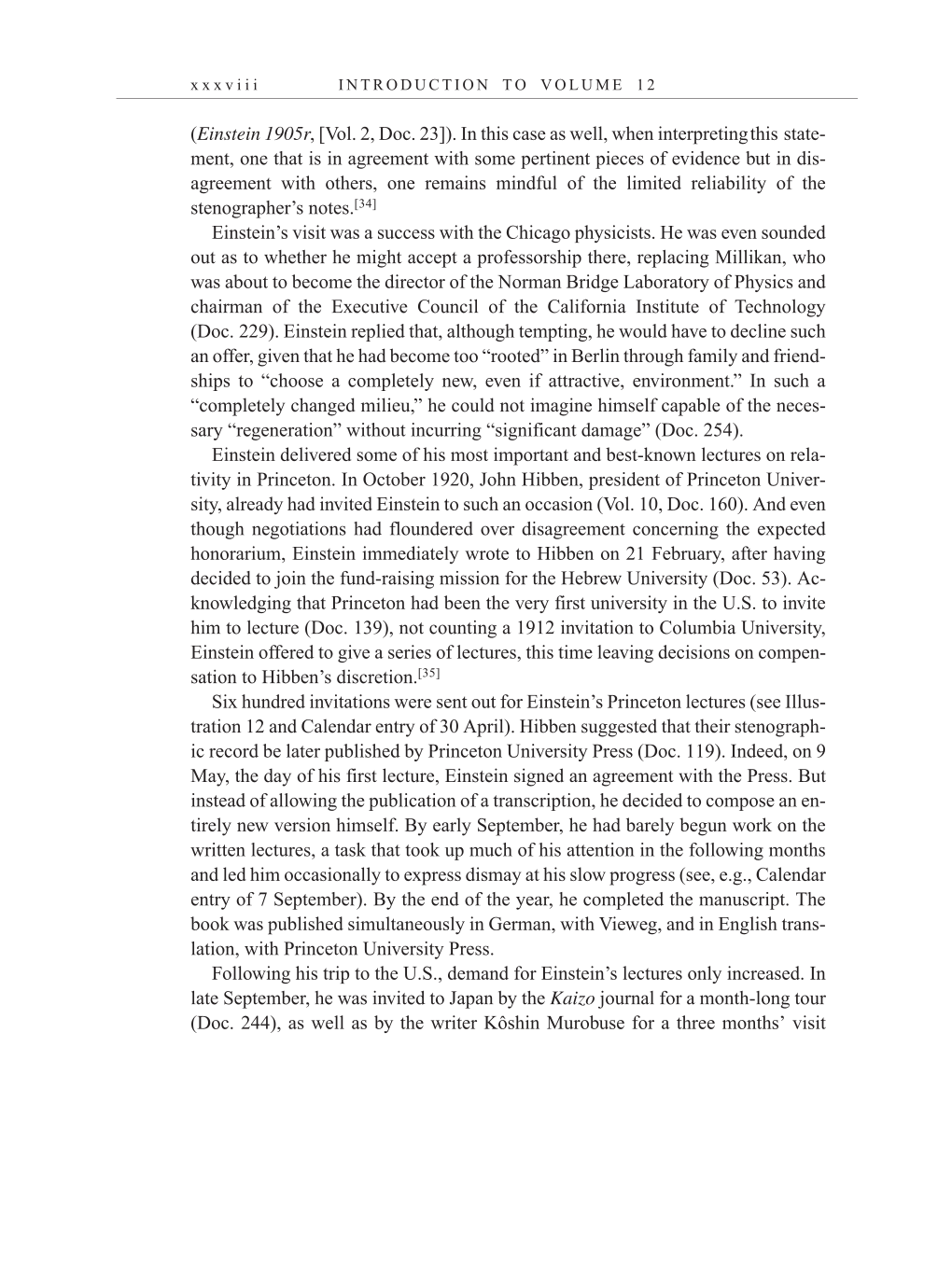x x x v i i i I N T R O D U C T I O N T O V O L U M E 1 2
(Einstein 1905r, [Vol. 2, Doc. 23]). In this case as well, when interpreting this state-
ment, one that is in agreement with some pertinent pieces of evidence but in dis-
agreement with others, one remains mindful of the limited reliability of the
stenographer’s
notes.[34]
Einstein’s visit was a success with the Chicago physicists. He was even sounded
out as to whether he might accept a professorship there, replacing Millikan, who
was about to become the director of the Norman Bridge Laboratory of Physics and
chairman of the Executive Council of the California Institute of Technology
(Doc. 229). Einstein replied that, although tempting, he would have to decline such
an offer, given that he had become too “rooted” in Berlin through family and friend-
ships to “choose a completely new, even if attractive, environment.” In such a
“completely changed milieu,” he could not imagine himself capable of the neces-
sary “regeneration” without incurring “significant damage” (Doc. 254).
Einstein delivered some of his most important and best-known lectures on rela-
tivity in Princeton. In October 1920, John Hibben, president of Princeton Univer-
sity, already had invited Einstein to such an occasion (Vol. 10, Doc. 160). And even
though negotiations had floundered over disagreement concerning the expected
honorarium, Einstein immediately wrote to Hibben on 21 February, after having
decided to join the fund-raising mission for the Hebrew University (Doc. 53). Ac-
knowledging that Princeton had been the very first university in the U.S. to invite
him to lecture (Doc. 139), not counting a 1912 invitation to Columbia University,
Einstein offered to give a series of lectures, this time leaving decisions on compen-
sation to Hibben’s
discretion.[35]
Six hundred invitations were sent out for Einstein’s Princeton lectures (see Illus-
tration 12 and Calendar entry of 30 April). Hibben suggested that their stenograph-
ic record be later published by Princeton University Press (Doc. 119). Indeed, on 9
May, the day of his first lecture, Einstein signed an agreement with the Press. But
instead of allowing the publication of a transcription, he decided to compose an en-
tirely new version himself. By early September, he had barely begun work on the
written lectures, a task that took up much of his attention in the following months
and led him occasionally to express dismay at his slow progress (see, e.g., Calendar
entry of 7 September). By the end of the year, he completed the manuscript. The
book was published simultaneously in German, with Vieweg, and in English trans-
lation, with Princeton University Press.
Following his trip to the U.S., demand for Einstein’s lectures only increased. In
late September, he was invited to Japan by the Kaizo journal for a month-long tour
(Doc. 244), as well as by the writer Kôshin Murobuse for a three months’ visit
